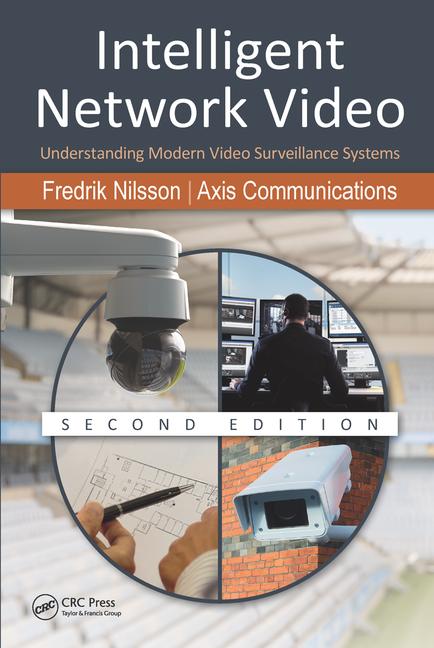More and more we see the idea of “smart cameras” being introduced in the physical security marketplace. Why is that? Actually, it’s for a couple of good reasons. Smart cameras excel at addressing highly constrained, single-purpose detection needs. A key factor instrumental in the proliferation of smart cameras is that they address tasks that are generalized across physical sites, such as counting, simple motion detection, license plate recognition, etc. These kinds of single function tasks have proven a sound fit for smart cameras.
In addition, from a marketing standpoint, having an easily referenced and identified solution such as smart cameras makes things easy to remember, simple and convenient, especially given the complexity of the physical security market. However, simplicity and ease of reference does not guarantee performance, intelligence or the ability to achieve your physical security requirements.
What is clear is many companies that have implemented these solutions are now experiencing serious limitations as they have outgrown their smart camera capabilities. Customers are realizing that their need for faster, more accurate and intelligent detection is somewhat lacking with these types of solutions.
So are smart cameras the best choice for your physical security needs? They have broad limitations, and to help you determine if a smart camera is the best choice for you, the following considerations have been assembled so you can study up and decide for yourself.
1. WHAT IS A “SMART” CAMERA?
One curious fact about smart cameras is the lack of a clear definition. There are no standards established to define a “smart camera.” There is no regulating body or association defining capabilities. So the name isn’t 100 percent clear, and thus it has become a generic term. Just the same, many vendors work hard to proclaim their camera as smart due to its ability to do “something” beyond visual data capture. But the notion of what constitutes a smart camera is certainly not immediately identifiable. We can generally conclude that smart cameras contain some kind of processing capability along with visual acquisition. Beyond that, what things do you need to consider when pondering the decision to purchase?
2. FUNCTIONALITY
There are technical limitations on functional capability tied to how smart cameras are designed to operate. One of the supposed benefits is their moderate per unit cost or ease of installation – which doesn’t come without a tradeoff in capability. It is important to be aware of what you are losing by taking the smart camera route. You should carefully examine all features and functions including upgradability, performance, range, dynamic capacity and interoperability with other security sensors. Significant processing and integration capability are typically lost through consolidating features into a single camera platform.
3. FLEXIBLE & ADAPTABLE SYSTEMS
How difficult is it to adjust to new intrusion requirements, capacity, features, integration or any other changes? Smart cameras combine hardware and software into one single-purpose system, therefore a change to the security environment typically has a significant negative impact. It is well understood that security policies, landscaping and environments change. So, even minor adjustments can render a smart camera solution significantly less useful or totally obsolete. Just the simple need to change a detection area or rule can be especially undermining to smart camera performance or basic usability. Purchasing a solution that is static, cannot scale, adjust or adapt may not be a long term or “smart” solution.
4. SALES, SUPPORT & IMPLEMENTATION
Smart cameras are targeted for mass marketing and are typically sold through resellers, integrators or the Internet, and that in itself has often become a frequent reason for failed implementations. Because smart cameras normally make up only a portion of the integrator’s revenue, your specific implementation typically is not treated as core to their business. They may even drop one smart camera line for another, leaving you without a path for change down the road. Even with a large integrator base, re-establishing relationships is never easy. Keep in mind that if you require customization, sparing or growth – which is extremely common – ensuring that you have a long term reliable supply of product through your supplier is important.
5. SCALABILITY & DISTRIBUTION
When you need to examine visual or meta-data between cameras, distribute data throughout a system, integrate one system with others or archive various levels of data, a smart camera system might not stand up to those needs. Passing data from system to system for complex decision-making through a distributed implementation is often difficult with smart cameras. The industry strives for standards, but in reality, those standards will always be years behind the new features being developed by product manufacturers. Do you want to keep track of previous detections, coordinate camera control commands, assign unique track identifiers, sync meta-data or perform other meta data activity and then take action based upon all the associated information? These types of request are difficult to ask of a smart camera.
6. SPEED & CAPACITY
Another drawback with smart cameras is their inability to keep pace with the processing and throughput requirements of security detection scenarios. As bad guys get smarter and come up with new ways to threaten facilities and assets, cameras need to become “smarter” by pulling in more data and applying more algorithms to that data. Unfortunately, an embedded system typically doesn’t grow. The very objective of the embedded approach is to enable a set design that can be replicated over and over again to facilitate a small package at a low price. As a result, capacity for computational and input growth is typically a trade-off that is made early on in the design.
7. COMPLEX PROBLEMS & ANALYTICS
Although smart cameras continue to advance technically they struggle to deal with highly complex security challenges. Simple object detection is viable; however, most intrusion scenarios are not simple and when challenges require multi-faceted detection scenarios, smart cameras cease to be smart. The ability to embed intensive analytical capability on-board a camera with such features as classification, learning or training, and multiple types of detection is challenging. If you need highly reliable detection, high frame rate and/or large resolution, a smart camera might struggle to be successful. Intensive analytics require raw processing power which isn’t possible in these camera form factors.
8. STRATEGIC, TACTICAL & OPERATIONAL INTELLIGENCE
A smart camera does not do well in performing enterprise wide decision making. In security systems the objective is to collect the data, understand it and distribute it to those that need it quickly. The ability to store, aggregate and report upon data is not the objective of a smart camera. In terms of real-time knowledge and awareness, the security organization obtains little to no insight into the system as a whole. Similarly, valuable data that can be shared between sensors is left unutilized and becomes the security person’s job to manage independently. Smart cameras provide surveillance at the level of a specific, typically single-purpose function. If you want to truly leverage your security system, smart cameras can fall significantly short of providing multi-layered organizational benefits.
9. LONGEVITY
Since smart cameras are singular non-modular devices, upgrading a component in order to keep pace with technological advances isn’t simple. This factor alone seriously diminishes the useful life and the notion of “smart” – especially with respect to their design. Even with minor upgrades, the ability to rework camera technology is not trivial. This non-modular approach behind the concept of smart cameras is neither sustainable nor fiscally prudent. Additionally, the camera itself is often the most expensive part to physically replace, as it is typically installed 20 to 30 feet in the air at some remote section of the facility. As a result, the need to physically access the camera to replace or upgrade it carries with it a significant labor cost.
10. TIGHTLY INTEGRATED
Various companies make claims that they have integration capabilities with their smart cameras. These claims can be a bit misleading, in that the camera typically makes data available for consumption to other systems. Meaning the intelligence part – what needs to be done with that data – actually needs to occur somewhere else, not within the camera itself. Thus, the mention of the term “integrated” really points to a command and control or PSIM, not the camera.
11. PRODUCT VS. SOLUTION
It is important to understand that a smart camera is a product. It is designed to solve a very specific problem. The confusion often sets in when vendors or advertising try to propose the “product” as a “solution” to remedy your security challenges. The fine point is: A product and a solution are not necessarily the same. In order to sell the product, resellers are naturally biased to proposing a solution that best fits the specific mission of their smart camera product. These vendors are looking to determine how the problem can be solved with a “smart camera.” In sharp contrast, a true analysis examines the entire challenge to determine an appropriate technological “solution” to address your specific security issues now and into the future. Shoehorning a product may not create any real value.
Although there is a place for smart cameras in the physical security playground, there should be considerable thought put into the decision to go this path. Smart cameras can be very generic and limited detection devices. Although they often have a very attractive price point it is important to consider the trade-off that is being made for performance and growth.
So, what then is the alternative? What choices exist for camera-based perimeter protection with an entire solution in mind? The answer: A software-based vision solution. These systems are all the things a smart camera is not and more:
- Not specific to a camera type of model. This allows the user to reuse existing cameras and gives them flexibility in selecting future models.
- Functionality is not hard-coded onto an embedded system, so it can grow with time.
- New features can be easily added without costly hardware or changes to the physical installation.
- They can move easily between server-based and edge-based implementations.
- They are collaborative in their data sharing design, and can easily accept new sensor types.
- Are designed to grow as the protection mission becomes larger or more complex.
- Focus on open architecture design, modularity, flexibility, and best of breed hardware and software to maximize system optimization.
There are a range of issues with smart cameras. However, one may still be right for you – either today or even into the future. Yet, at this point you should be keenly aware of their various shortcomings – clear of advertising bias – to make an educated decision. After all, when it comes to product quality that directly impacts your company’s safety and success; you want to make an intelligent decision – not just a “smart” one.
This column contributed by PureTech Systems.









